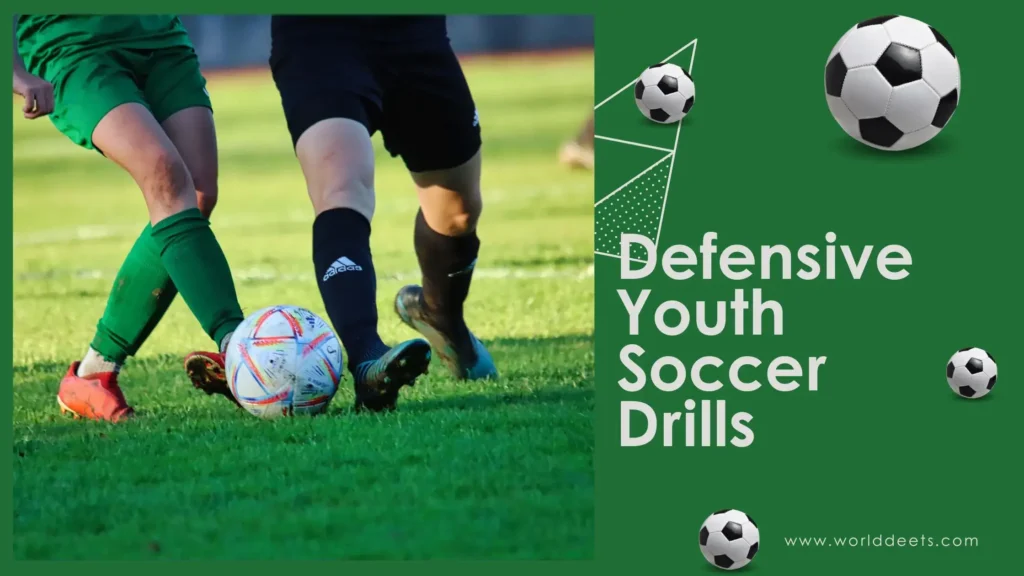Defensive Youth Soccer Drills | Developing Strong Defenders

Soccer, also known as football in many parts of the world, is a beloved sport played and watched by millions of people. It’s a game that requires skill, teamwork, and strategy. In the world of youth soccer, one crucial aspect of the game is defense. Learning to be a solid defender is essential for success on the field, and that’s where defensive youth soccer drills come into play. In this article, we’ll explore the importance of these drills and provide a list of some fundamental exercises suitable for young soccer players.
Understanding the Importance of Defense
Defense is a vital component of any soccer team’s success. It’s not just about preventing the opposing team from scoring; it’s also about creating opportunities for your team to gain possession of the ball and launch counterattacks. Here are some key reasons why defense is crucial in youth soccer:
1. Teamwork
Soccer is a team sport, and defense requires effective coordination between players. A strong defensive line is essential for a team’s overall success.
2. Ball Possession
Good defenders can intercept passes and tackle opponents, helping their team gain possession of the ball. This is the first step in creating goal-scoring opportunities.
3. Preventing Goals
Of course, the most obvious goal of defense is to prevent the opposing team from scoring. A solid defense can be the difference between winning and losing a game.
4. Building Confidence
For young soccer players, mastering defensive skills can boost their confidence on the field. Knowing they can stop the opponent’s attacks is empowering.
See Also : Hardest Sports In The World
The Role of Defensive Youth Soccer Drills
To become a strong defender, young soccer players need to practice specific skills and techniques. Defensive youth soccer drills are designed to teach players the fundamentals of defense and improve their abilities. These drills focus on various aspects of defending, including positioning, tackling, intercepting passes, and teamwork.
Basic Defensive Youth Soccer Drills
Now, let’s delve into some fundamental defensive youth soccer drills suitable for 8th-grade readers. These drills will help young players develop the skills they need to become effective defenders.
1. Cone Dribbling and Tackling Drill
Objective: Improve dribbling skills and practice tackling.
Materials: Cones, soccer ball.
Instructions:
- Set up a series of cones in a straight line, about 2 feet apart.
- Have the players take turns dribbling the ball through the cones.
- As they approach the last cone, a coach or another player stands as a defender.
- The defender’s task is to try and tackle the ball away from the dribbler.
- The dribbler should use their body to shield the ball from the defender and protect it.
2. Positioning and Marking Drill
Objective: Teach players how to maintain proper defensive positioning and mark their opponents.
Materials: Cones, soccer ball.
Instructions:
- Create a small playing area with cones, approximately 20×20 yards.
- Divide the players into pairs, with one player as the attacker and the other as the defender.
- The attacker tries to dribble the ball past the defender and into a designated area.
- The defender’s role is to maintain a good defensive position and prevent the attacker from entering the area.
- Stress the importance of staying between the attacker and the goal.
3. Pass Interception Drill
Objective: Improve the ability to intercept passes.
Materials: Cones, soccer ball.
Instructions:
- Set up a grid with cones, around 20×20 yards in size.
- Divide the players into two teams.
- One team serves as the passing team, and the other as the defending team.
- The passing team tries to make accurate passes between the cones to their teammates.
- The defending team’s objective is to intercept the passes and gain possession.
- Rotate teams after a set amount of time or successful interceptions.
4. 1v1 Defending Drill
Objective: Enhance one-on-one defending skills.
Materials: Cones, soccer ball.
Instructions:
- Create a rectangular playing area with cones, about 20×10 yards.
- Pair up the players, with one as the attacker and the other as the defender.
- The attacker starts with the ball and tries to dribble past the defender to reach the opposite end of the field.
- The defender’s job is to prevent the attacker from advancing.
- Emphasize good defensive stance, staying on their toes, and using their body to shield the attacker.
5. Team Defending Drill
Objective: Teach players how to defend as a team and maintain shape.
Materials: Cones, soccer ball.
Instructions:
- Set up a playing area with cones, about 40×30 yards.
- Divide the players into two teams.
- One team starts as the attacking team, and the other as the defending team.
- The attacking team tries to keep possession of the ball, while the defending team aims to win it back.
- Encourage the defending team to work together, pressuring the ball and covering passing lanes.
- Switch roles after a certain period.
Developing Defensive Skills Over Time
It’s important to remember that developing defensive skills in youth soccer takes time and practice. These defensive youth football drills provide a strong foundation, but consistent effort and dedication are key to improvement. Here are some additional tips to help young players become better defenders:
1. Proper Footwork
Teach players the importance of staying on their toes, shifting their weight, and moving laterally to stay with the attacker.
2. Communication
Encourage players to communicate with their teammates while defending. This includes calling for support, marking opponents, and signaling for a switch in coverage.
3. Body Positioning
Emphasize the significance of maintaining the correct body positioning when defending. Players should be goal-side of their opponent, with their body between the attacker and the goal.
4. Anticipate Passes
Help players learn to read the game and anticipate where the ball is likely to go. This can lead to more successful interceptions.
5. Patience and Timing
Teach young defenders to be patient and not rush into tackles. Timing is essential to successful tackles and interceptions.
6. Practice Regularly
Repetition is the key to improvement. Encourage players to practice these drills regularly and seek feedback from coaches and peers.
Wrapping Up
Becoming a strong defender in youth soccer is a journey that requires dedication, practice, and a willingness to learn. Defensive youth soccer drills provide an excellent platform for young players to hone their skills and develop the necessary attributes to succeed on the soccer field. By mastering the basics of defense, young soccer enthusiasts can make a valuable contribution to their teams and enjoy the beautiful game to its fullest. So, get out there, practice these drills, and watch your defense become a force to be reckoned with on the soccer field.






